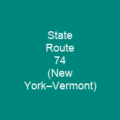Vermont, a state nestled in New England’s embrace, is more than just a geographical entity; it’s a living testament to history, nature, and progressive values. Imagine Vermont as the quiet, unassuming sibling of the United States, with its population of 648,493 making it the second-least populated U.S. state.
Geography and Climate
Vermont’s geography is a tapestry of mountains and valleys, with the Green Mountains running north-south through its heart. The terrain is mostly forested, featuring hardwoods and conifers, and experiencing warm summers and cold winters. Despite being the smallest landlocked state in New England, Vermont boasts a rich diversity of ecosystems, from alpine peaks to fertile river valleys.
Climate
Vermont’s climate can be quite extreme, with record highs reaching 105°F (41°C) and lows plummeting to -50°F (-46°C). The state is also susceptible to large-scale flooding due to its topography and climate patterns. Vermonters experience a humid continental climate, marked by muddy springs, mild early summers, hot Augusts, and colorful autumns.
History and Culture
Vermont’s history is as rich as its landscape. Native Americans inhabited the area for about 12,000 years, with tribes like the Abenaki and Mohawk active in the region at European encounter. The French claimed the territory as part of New France in the 17th century but were defeated by Britain in the Seven Years’ War. Vermont declared independence during the American Revolutionary War, establishing itself as a unique state.
The name ‘Vermont’ comes from the French translation of Green Mountain(s), coined by Samuel de Champlain. The state’s constitution banned adult slavery and provided universal suffrage for women in 1880, making it a leader in progressive values. Vermont has since become increasingly progressive, introducing civil unions in 2000 and same-sex marriage in 2009.
Demographics
Vermont’s population is predominantly White (94%), with French Canadians forming a significant portion. The state’s dialect, Western New England English, features distinct pronunciation patterns such as full r sounds and vowel shifts. Vermonters speak French at home due to its proximity to Quebec.
Economy
Vermont’s economy is driven by agriculture, forestry, and tourism. Dairy farming remains a primary source of income, with organic dairy farms making up 28.5% of the state’s total. Vermont is also known for maple syrup production and apple growing, which contributes significantly to its agricultural output.
The state has a GDP of $40 billion as of 2022, ranking it among the smallest states in terms of economic size but with a per capita GDP of $63,206. Vermont’s largest private employer is GlobalFoundries, which provides jobs to over 3,000 employees at its plant in Essex Junction.
Education and Healthcare
Vermont ranks high in education spending and volunteerism. The University of Vermont Medical Center is the state’s largest employer, with over 8,800 employees. Vermont was named the nation’s smartest state in 2005 and 2006, with a low pupil-to-teacher ratio and high graduation rates.
The state excels in public health, ranking sixth for well-being in a study by Gallup and Healthways in 2010. Vermont has implemented various programs to improve preventive services and manage chronic conditions, such as the Vermont Child Health Improvement Program.
Transportation
Vermont’s transportation infrastructure is crucial for its economy and daily life. The state has four ferry routes across Lake Champlain and passenger rail services provided by Amtrak. Public transit agencies operate bus services at various levels, with Patrick Leahy Burlington International Airport serving as the primary airport.
Public Transportation
Vermont’s public transportation system is well-developed, with numerous bus routes connecting major cities and towns. The state has a high rate of car ownership but also encourages alternative modes of transport through its extensive network of roads and highways.
Culture and Festivals
Vermont hosts various festivals throughout the year, including the Maple Festival, Music Festival, Dairy Festival, and Apple Festival. Notable events include the Vermont Symphony Orchestra, the Vermont International Film Festival, and the Green Mountain Film Festival. The state is also home to Phish, a well-known rock band, and the House of LeMay performance group.
Notable Residents
Vermont has produced numerous notable residents, including authors like Richard Morris Hunt, Norman Rockwell, and Bill McKibben. Politicians such as Bernie Sanders have also called Vermont home. In fiction, the state is featured in works by H.P. Lovecraft and Annie Baker.
Conclusion
Vermont’s unique blend of natural beauty, progressive values, and rich history makes it a fascinating place to explore. From its verdant mountains to its vibrant cultural scene, Vermont offers something for everyone. Whether you’re a nature lover, a history buff, or simply someone looking for a quieter life, Vermont is the perfect destination.

You want to know more about Vermont?
This page is based on the article Vermont published in Wikipedia (retrieved on March 2, 2025) and was automatically summarized using artificial intelligence.







